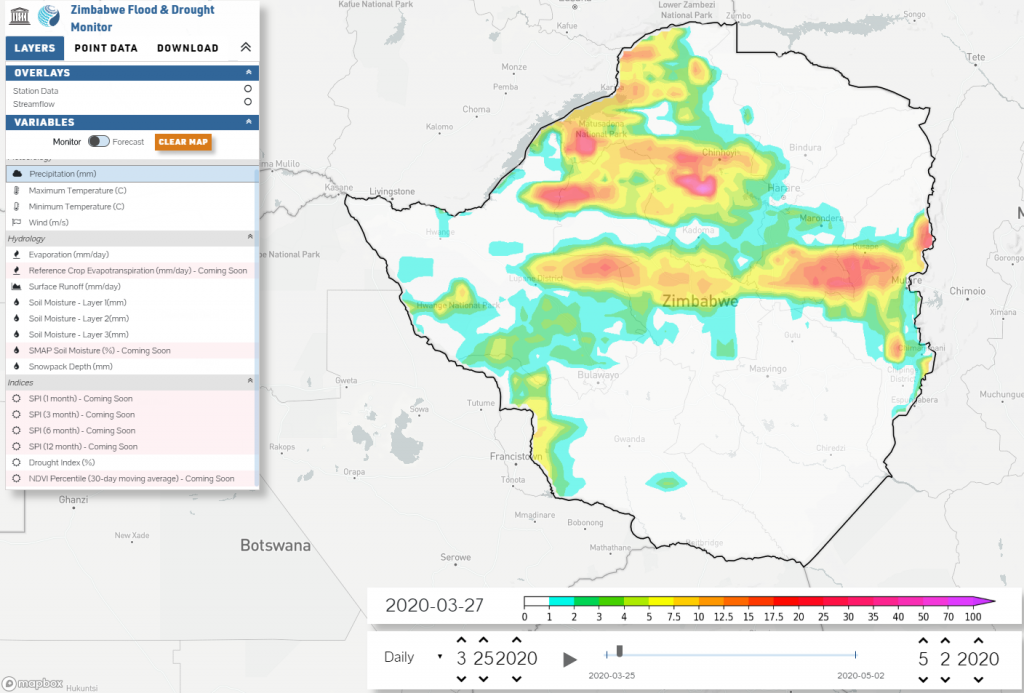A New Flood and Drought Monitoring System for Mozambique and Zimbabwe
UNESCO G-WADI and Princeton Climate Institute have developed a new Flood and Drought Monitoring and Forecasting system for Mozambique & Zimbabwe with a 0.05° (∼5 km) resolution. The system is based on the continental African Flood and Drought Monitor (AFDM), which has been updated to a higher resolution near real-time system using a combination of existing datasets used in the operational AFDM and newly available datasets. The product is intended to provide advance warning of impending floods and droughts.

The hydrological model, which provides daily, freely accessible historic data and forecast ensembles for several key hydrological variables, including soil moisture, evaporation, runoff, and streamflow. The meteorological forcing is derived by merging a wide range of station, satellite, and atmospheric model data to obtain the best possible predictions across all climate zones in Mozambique & Zimbabwe. The runoff estimates from HBV are routed downstream using a highly computationally efficient RAPID discharge routing scheme, which increases the resolution and robustness of the streamflow predictions.
In addition, local station data have been incorporated into the system and are available from the online interface.
In the case of Zimbabwe, in order to train key stakeholders on the effective use of the monitor, a capacity building workshop was jointly organized by the UNESCO Regional Office for Southern Africa, Meteorological Services Department (MSD) and Princeton University from 25-27 November 2019. Stakeholders such as Oxfam, World Vision, Red Cross, FAO, UNDP, the Zimbabwe National Water Authority and the Ministry of Lands, Agriculture, Water, Climate and Rural Resettlement, attended.
More information is available from the UNESCO Regional Office for Southern Africa.
